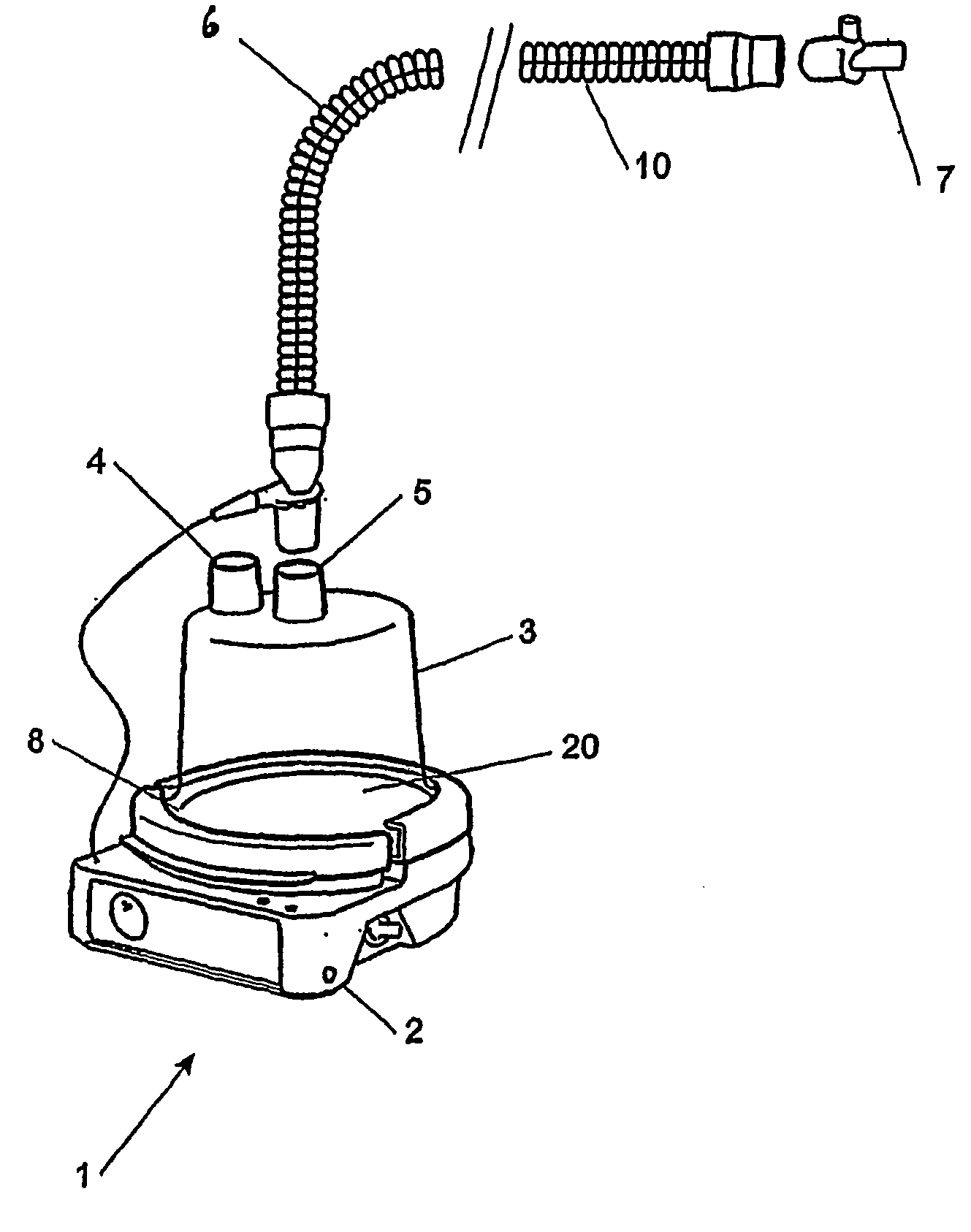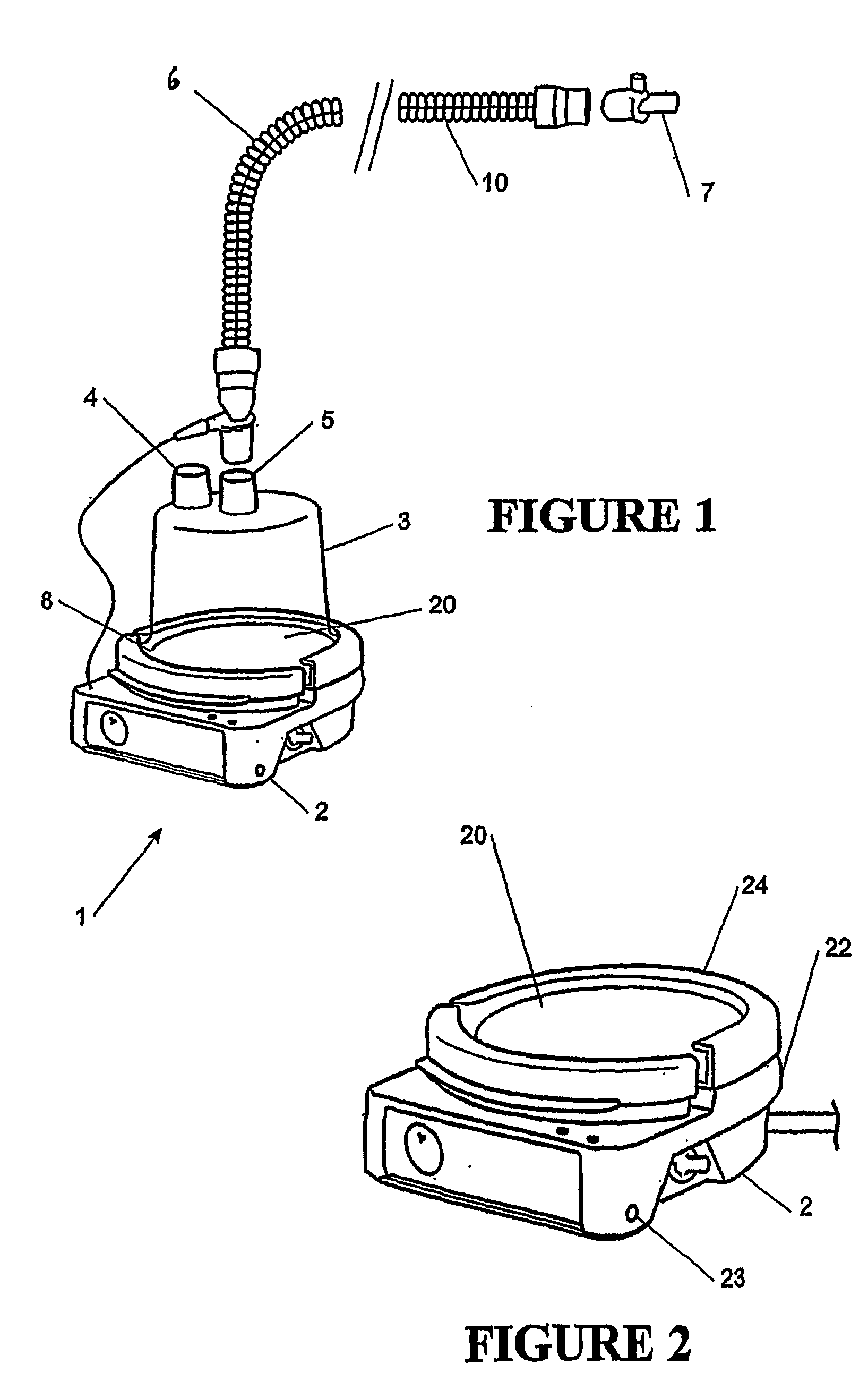Breathing assistance apparatus
a technology of assistance apparatus and air, which is applied in the direction of inhalators, life-saving devices, and other medical devices, can solve the problems of significant risk of patient rebreathing expired air, inability to precisely control the frequency of inhalation, and undesirable rebreathing of expired air, etc., and achieves the effect of great accuracy
- Summary
- Abstract
- Description
- Claims
- Application Information
AI Technical Summary
Benefits of technology
Problems solved by technology
Method used
Image
Examples
Embodiment Construction
[0025] Whether used in a hospital environment or in a home environment, the nasal cannula of the present invention will generally have associated three main pieces of apparatus. Firstly an active humidifier that controls the temperature of a heater plate heating a body of water to achieve a desired temperature and humidity of the gases being humidified. Secondly a transport conduit from the humidifier to the patient is also required, which is preferably heated to reduce condensation, or “rain out”. Thirdly a cannula designed to fit up into the nasal cavity and deliver humidified, pressurized gases.
[0026] Referring to FIG. 1 a humidifying apparatus as might be used in a hospital generally referenced 1 is shown. The apparatus comprises a body 2 containing heating means comprising a heating plate 20 having an electric heating element therein or in thermal contact therewith and control means for example electronic circuitry which may include a microprocessor for controlling the supply ...
PUM
 Login to View More
Login to View More Abstract
Description
Claims
Application Information
 Login to View More
Login to View More - R&D
- Intellectual Property
- Life Sciences
- Materials
- Tech Scout
- Unparalleled Data Quality
- Higher Quality Content
- 60% Fewer Hallucinations
Browse by: Latest US Patents, China's latest patents, Technical Efficacy Thesaurus, Application Domain, Technology Topic, Popular Technical Reports.
© 2025 PatSnap. All rights reserved.Legal|Privacy policy|Modern Slavery Act Transparency Statement|Sitemap|About US| Contact US: help@patsnap.com



